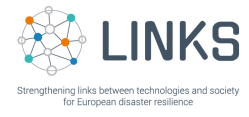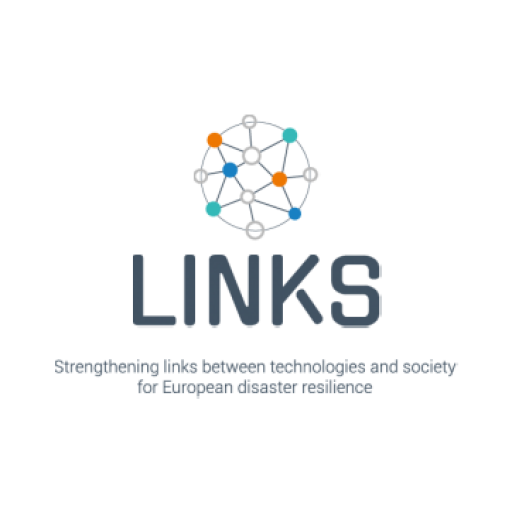
The LINKS Community Center
The LINKS Community Center (LCC) is a web-based platform that consolidates knowledge produced by the LINKS project and offers a user-friendly access to its outputs. It also aims to foster a community where stakeholders can exchange information and experiences. The development process of the LCC, from concept to implementation, was described in deliverables D7.1 – D7.4, although the “final demonstrator” described in D7.4 was not the final version of the platform itself which saw continuous improvements throughout the project in all of its aspects, such as user experience and content.
LCC users can find a large collection of structured and semantically linked information on the use of Social Media and Crowdsourcing (SMCS) in disasters by browsing 4 libraries covering existing SMCS technologies, relevant guidelines, practical use cases and suggested crisis communication for several hazard types. These libraries are described in detail in the “Presentation of the final version of the 4 libraries” part of this newsletter.
The libraries saw major usability improvements in how the data is structured and presented. Each library is outfitted with a set of filters similar to those of online shops. This helps users find the data they need by selecting criteria that the entries must fulfil, such as a certain language for a guideline or a particular function that a technology must have (Figure 1). This way, navigating through large amounts of knowledge becomes easy and quick. On top of that, the LCC also features a site-wide search function.
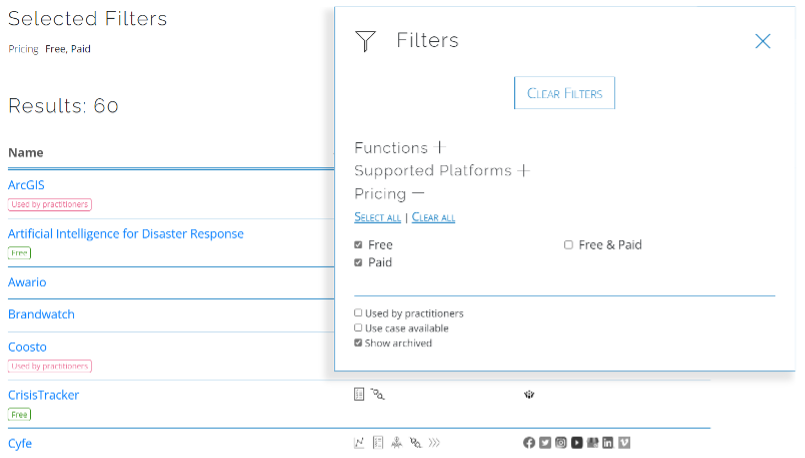
Since the LCC also aims to establish and maintain a stakeholder community, it encourages knowledge exchange by offering registered users the possibility to contribute new content to the libraries via a set of intuitive online forms (Figure 2).
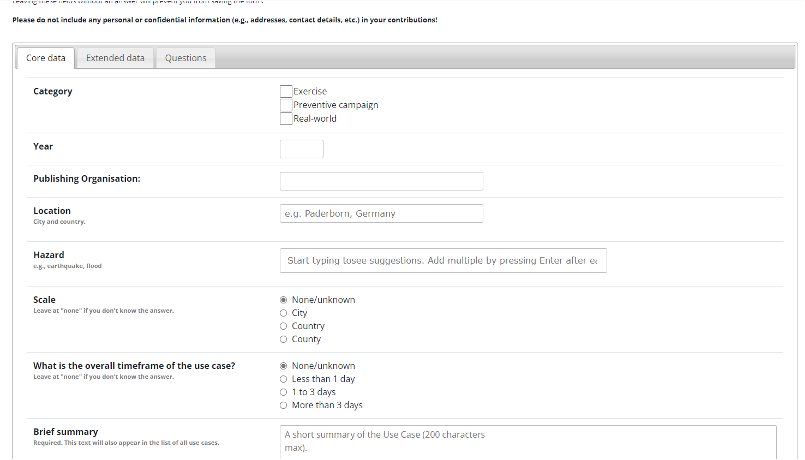
Apart from the libraries, the LCC offers collections of relevant resources and professional networks within Social Media in disaster management as well as the other LINKS outputs: the Resilience Wheel, the Including Citizens Handbook and Feel Safe. To help the users navigate through all this information, the LCC provides User Guidance which is the implementation of the LINKS Framework. This is particularly useful to those who are new or unfamiliar with the LCC, the LINKS project and its concepts.
The final version of the LINKS Framework
The final version of the LINKS Framework is the result of three years of work to turn knowledge from three different domains (disaster risk perception of vulnerability, disaster management processes and disaster community technologies) into an integrated set of valuable resources under two thematic areas (engaging with citizens and improving communication). The journey from “theory” to “practice” has been described in deliverables 5.3, 5.4 and 5.5. The process is described in the visual below (Figure 3).
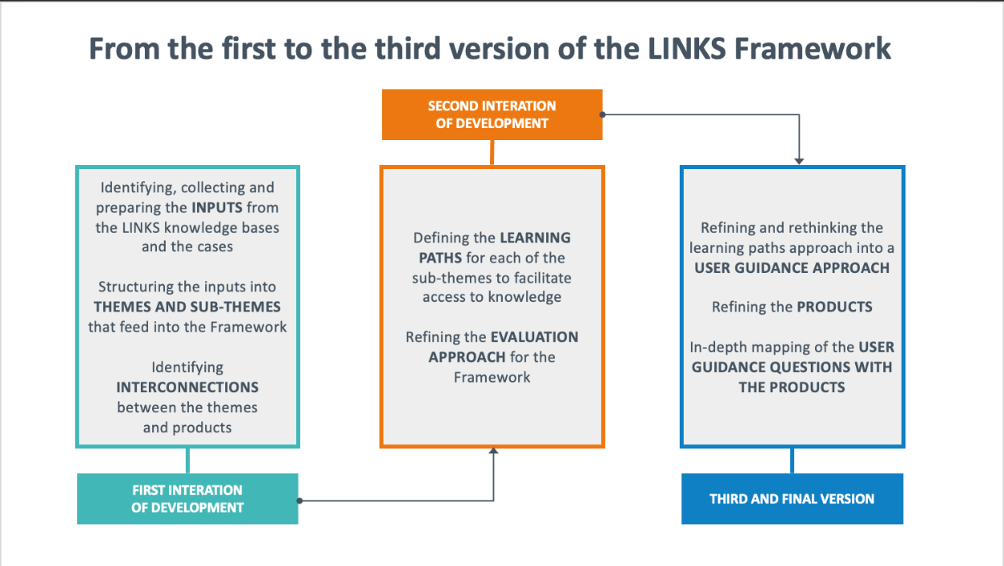
The path from the inputs of the knowledge bases to the user guidance approach implemented in the last version entailed both internal (e.g. case assessments, brainstorming sessions) and external (workshops, LINKS Advisory Committee meetings) rounds of evaluation to ensure that the Framework is an actionable outcome and serves the primary purpose of guiding relevant stakeholders to focus on what is essential when using SMCS in all phases of disasters. The stakeholders who can benefit from the knowledge available in the Framework are diverse and range from disaster management organisations to other actors (e.g. researchers) engaging with topics in disaster risk management (DRM) and disaster risk reduction (DRR). Depending on the type and the objectives of the stakeholder, the Framework offers insights into what is essential to consider when applying SMCS to:
- Improving communication: in areas such as targeting communication, ensuring credible information, and making information accessible
- Engaging with citizens: including collecting and analysing information, mobilising citizens, and mobilising volunteers
In its final version, the Framework addresses the question above by making accessible unique and actionable products – four libraries on Technologies, Guidelines, Crisis Communication messages, and Use Cases; the Including Citizens Handbook, an educational platform Feel Safe, and the Resilience Wheel – through a user guidance Q&A approach as previously highlighted above.

The term “orientation” evokes a compass that aims to support navigation within and across themes and sub-themes. The overall goal is to facilitate access to the LINKS knowledge made available in the core components of the Framework, namely the products, and through the LCC. The Framework and all our products can be accessed here – check them out!
